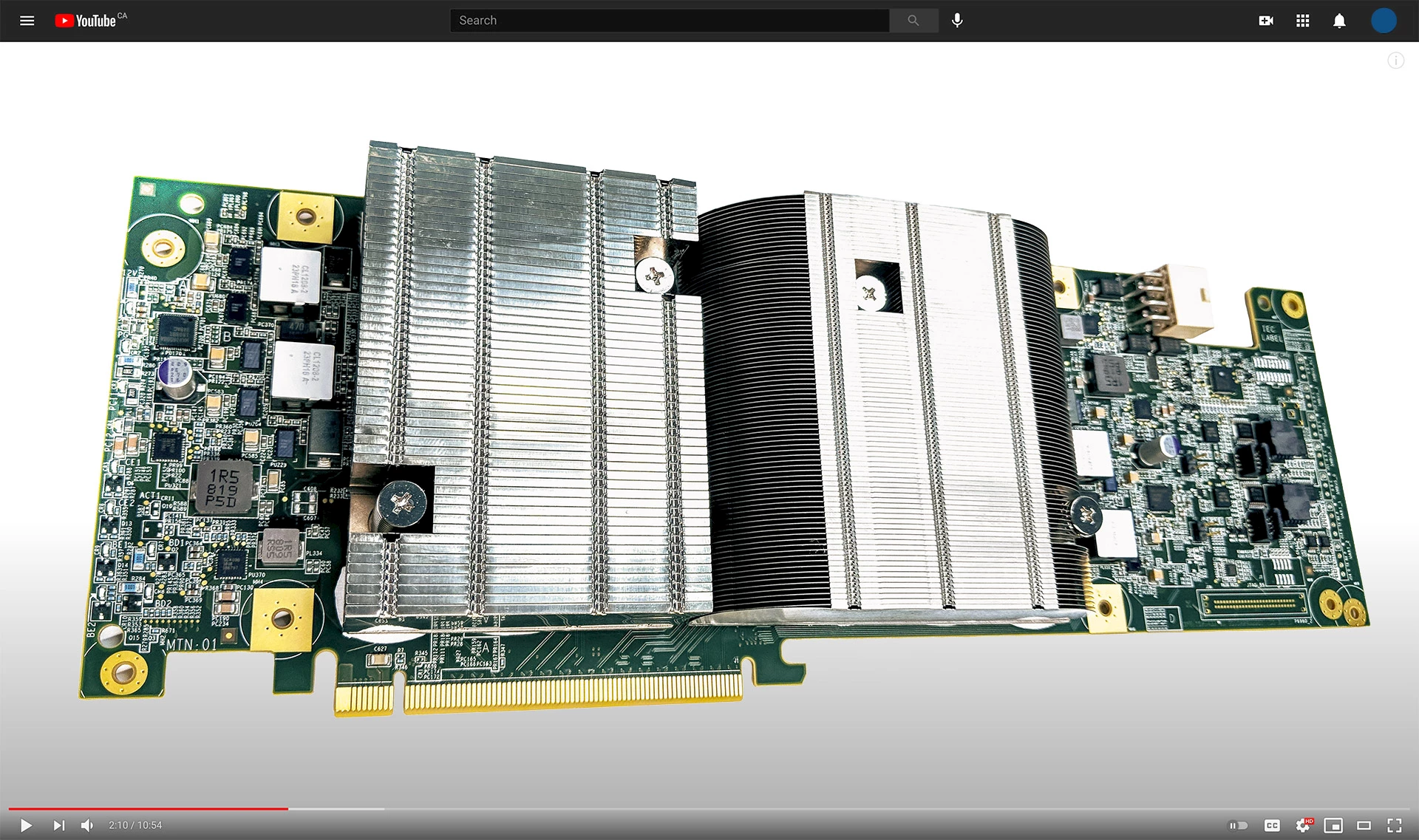YouTube chips for crunching

Argos Video Coding Unit. © Google/YouTube.
The YouTube platform crunches a huge amount of computing power allocated to a single task: transcoding videos. Each time you download a video, YouTube’s servers convert it to a dozen different versions, each in a specific size, so that it doesn’t send, say, a 4K or 8K file to your phone. It then re-encodes the video with a compression codec to save bandwidth. This operation is called transcoding and it is computationally intensive. The most efficient codecs -- the ones that best preserve the quality of the image while compressing as much as the inferior codecs -- are also the most demanding in terms of computation. For example, the VP9 offers, for the same file size, a much higher image quality than the classic H.264, but its processing takes five times longer.
Google (which owns YouTube) has embarked on the development of its own chips dedicated to improving the quality and speed of transcoding. The Argos chip promises a 20- to 30-fold efficiency gain, which is no mean feat. If you were to post an 8K video right now, YouTube’s servers would output a 144p, 240p, 360p, 480p, 720p, 1080p, 1440p, 2160p, and 4320p version so that all users who watch your movie receive a format suitable for their device’s screen size and network connectivity. With Argos, Google is trying to solve the huge problem of meeting the growing demand and requirements of new video formats while maintaining quality.
⇨ Ars Technica, Ron Amadeo, “YouTube is now building its own video-transcoding chips.”
2021-04-22
